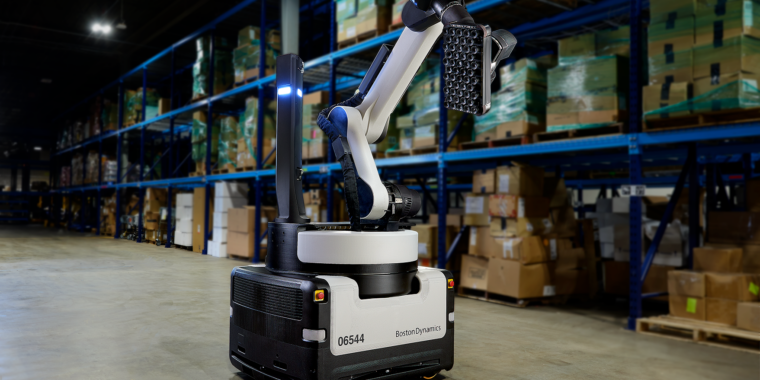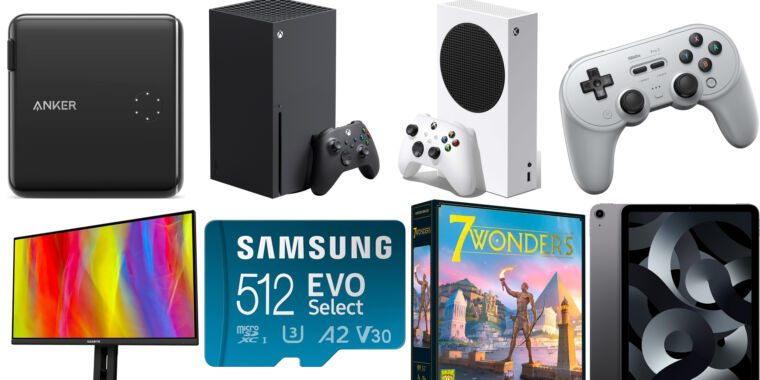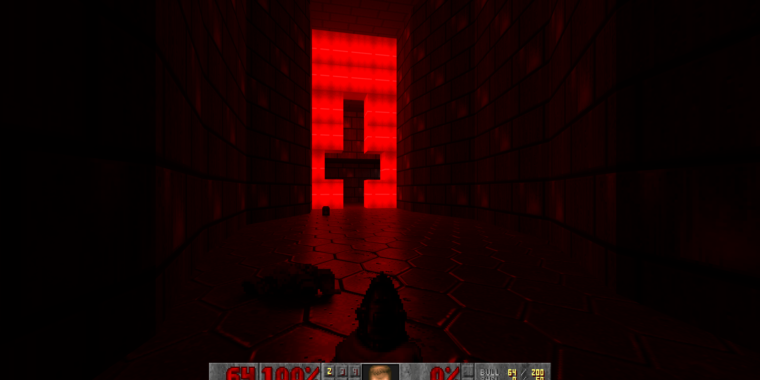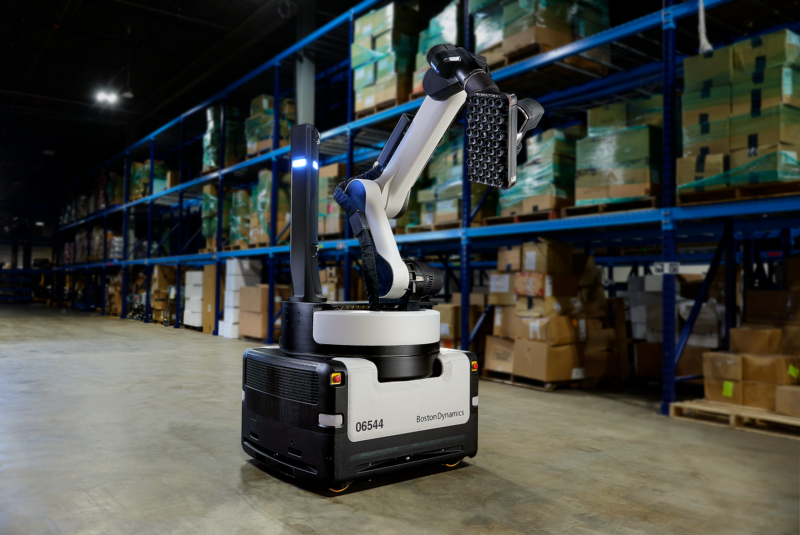
Boston Dynamics
Boston Dynamics has launched its second commercial robot. After debuting its four-legged robot dog, Spot, on the market in 2020 for $75,000, it’s now showing off the commercial version of Stretch, a warehouse box-moving robot that is available for purchase.
Stretch arrived in prototype form in March 2021, and after a year of on-the-job trials and more development, it was refined into a commercial product. The purpose of the bot is still the same: it’s a box mover. Stretch is a warehouse worker that is meant to quickly take over unloading trucks, depalletizing boxes, and building orders without any need to build additional infrastructure.
Box-moving arms are nothing new, but they are usually stationary, which means you have to bolt them to the floor in a specific spot and design your warehouse around the robot location. Stretch is mounted on a big, wheeled base, so it has more human-like flexibility in what it can do throughout the day. You can have Stretch drive right into a truck and do some box unloading in the morning and then move on to the order building later in the afternoon. The base is the same size as a pallet, so it can go just about anywhere in a warehouse.
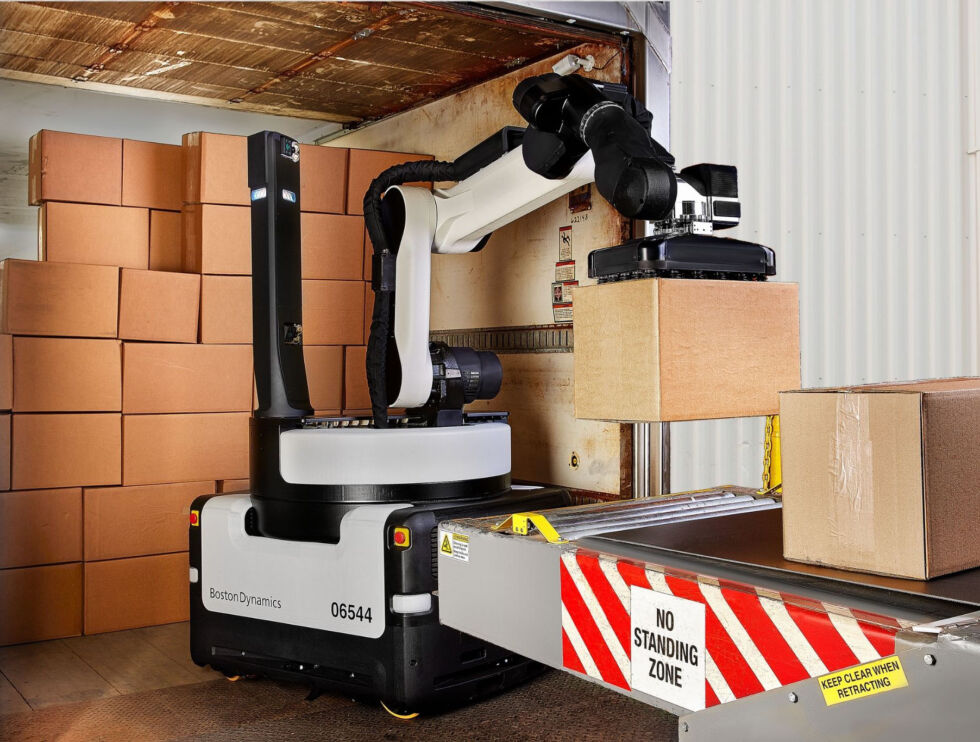
Boston Dynamics
The commercial version of Stretch has changed a lot since last year’s prototype. Boston Dynamics tells us the production version is “designed to scale” and that there have been component improvements designed to help with manufacturability and cost. One new capability is that, if a stack of boxes falls over, Stretch can autonomously recover the fallen boxes. The commercial version of Stretch can lift up to 50 pounds and runs for 16 hours with a high-capacity battery option.
The pictures say a lot. The fit and finish dramatically improved since last year. It looks like the plastic cladding on the body has been reworked, with every part of the robot now having smooth, rounded edges. The prototype is bolted together with a number of uneven, flat panels and a pile of loose wires on top of the base, while the commercial version wraps everything in a nicer package.
If you zoom in on the photos, many of the panels in the base surprisingly look 3D-printed. Telltale stair-stepping is visible in the perimeter of the front white panel, and the round base section shows horizontal lines from the print layers and vertical striping from the individual polygons that represent a circle in the CAD file. With the Hyundai acquisition, I was expecting a more car-like manufacturing process (big fiberglass panels), but it looks like we aren’t there yet.
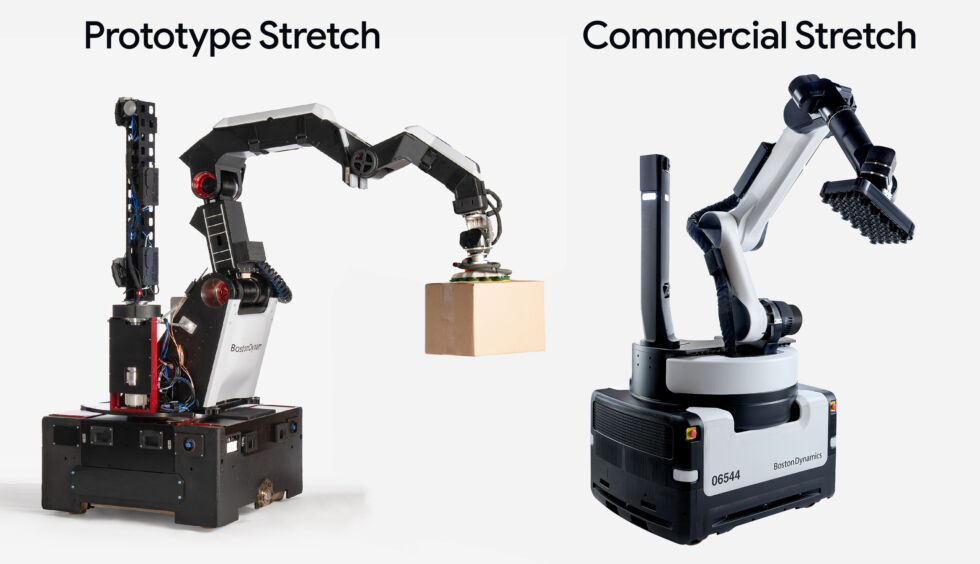
Boston Dynamics / Ron Amadeo
If we start from the business end of Stretch, the vacuum box gripper is now box-shaped—a rectangle—instead of the prototype’s hexagon gripper, with 50 small suction heads instead of the 18 larger heads on the prototype. The arm geometry is completely different. Prototype Stretch had a big arc shape in each arm segment, while commercial Stretch uses more traditional, straight arm segments. Where the arm connects to the base, prototype Stretch had a big, white rectangle shape that looked a little like a torso, while the commercial version turns this into a round base on top of the big square chassis. On both versions, this base spins around as the robot’s primary pivot point, so it makes sense that it’s round.
The big tower in the back, the “perception mast,” is the primary way Stretch sees the environment, and now the mast has all of its components nicely integrated in a plastic shell. It also looks a bit smaller than the prototype. Last year we were told LIDAR would be incorporated into the base of the robot for the production version. A good spot for those sensors would be the new wide, horizontal slots that are on the bottom of the robot base, which would ensure Stretch won’t run over a foot or crash into anything.
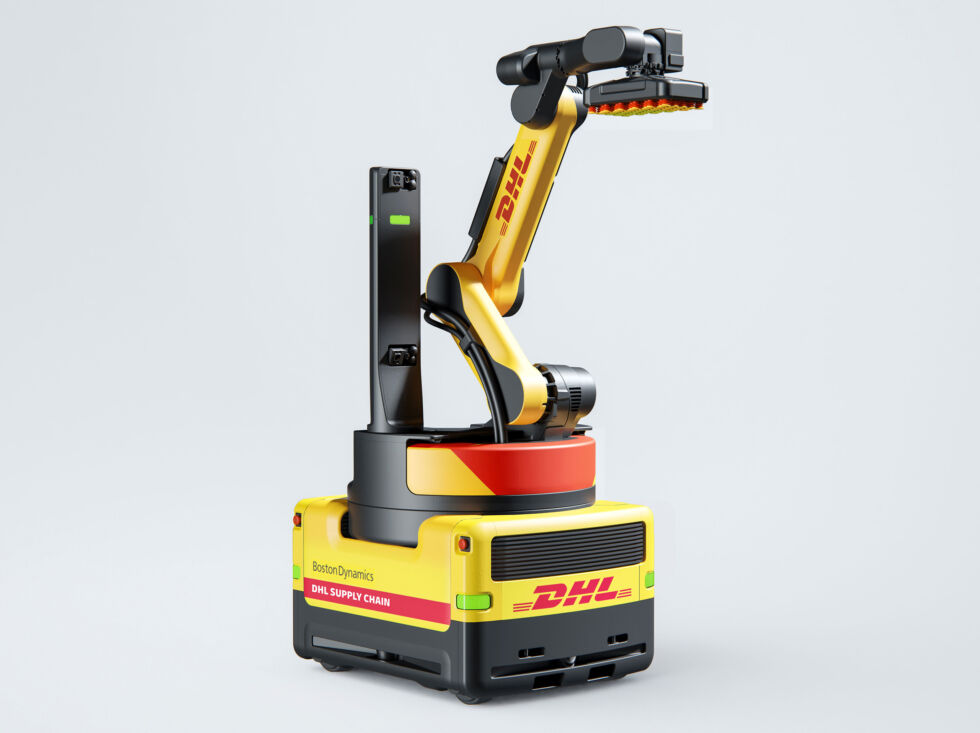
Boston Dynamics
Stretch is available for purchase, but the price isn’t public so you’ll have to call the Boston Dynamics sales team. Whatever it costs, Stretch is apparently already a hit. The company’s press release says that “Stretch has been in pilot testing with a select group of customers over the last several months. All units scheduled for 2022 delivery have already sold out thanks to strong demand from those early customers.” Boston Dynamics is now accepting Stretch reservations for 2023 and 2024.
Customers so far include DHL, Gap, H&M, and the logistics company Performance Team. DHL placed a $15 million, multi-year order that was announced in January. That deal apparently came with a sweet new paint job, and DHL will now have branded yellow robots running around the warehouse. Sadly, there’s no YouTube video yet of the new bot in action.

